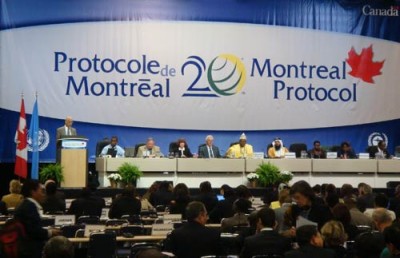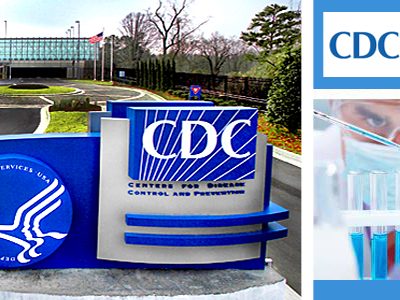A Big Step for the Montreal Protocol
 Parties to the Montreal Protocol will hold their 25th meeting next week in Bangkok. In addition to all their normal business related to the continuing phasedown of ozone-depleting substances (ODS), parties at this meeting will consider a huge step, in the form of proposals to amend the Protocol to phase down Hydrofluorocarbons (HFCs). Proponents of this step have been working hard to promote it, and have secured widespread support beyond the sponsoring delegations, including a joint announcement in support of HFC control by the UN and China in June.
Parties to the Montreal Protocol will hold their 25th meeting next week in Bangkok. In addition to all their normal business related to the continuing phasedown of ozone-depleting substances (ODS), parties at this meeting will consider a huge step, in the form of proposals to amend the Protocol to phase down Hydrofluorocarbons (HFCs). Proponents of this step have been working hard to promote it, and have secured widespread support beyond the sponsoring delegations, including a joint announcement in support of HFC control by the UN and China in June.
Since its adoption in 1987 and in multiple updates since, the consistent target of the Montreal Protocol has been cutting chemicals that destroy stratospheric ozone. The most important of these, and the first controlled, were the Chlorofluorocarbons or CFCs (so named because their molecules contain chlorine, fluorine, and carbon). Many more ozone-destroying chemicals have been added since then, all containing chlorine and/or bromine in molecules with long enough atmospheric lifetime to reach the stratosphere, where strong solar UV releases the chlorine or bromine in chemically active forms that proceed to catalytically destroy ozone.
Not all ODS are equally effective at destroying ozone, and the Protocol has faced some hard strategic choices on how to treat different ones. The hardest case was the Hydrochlorofluorocarbons (HCFCs). (As you can probably now guess, these molecules contain hydrogen, chlorine, fluorine, and carbon. These are *not* the HFCs. We’ll get to them, but at this point you can probably guess what atoms they contain.) By virtue of their hydrogen atoms and their hydrogen-carbon bonds, HCFCs are a lot more reactive in the atmosphere than CFCs, so they are less effective conveyer belts at delivering chlorine to the stratosphere. They are thus weaker ozone destroyers, only about 1 to 10 percent as bad as the CFCs.
The problem was that in the early rush to cut CFCs, the most readily available substitutes for many uses were HCFCs – still harmful, but much less so. Waiting for completely ozone-safe alternatives would have meant delaying the switch from the terrible (CFCs) to the “pretty good but not good enough” (HCFCs). At the time, no one was making the needed HCFCs at industrial scale, or equipment designed to use them. For firms to decide HCFCs were viable business prospects and make the needed investments, they had to be persuaded the chemicals weren’t going to be regulated out of existence as soon as the new plants were built. So Protocol drafters made the sensible but tough decision to promote rapid build-up of HCFCs by informally assuring them a reasonable commercial lifetime – not forever, but long enough to make the initial investments pay off. With this assurance, HCFCs were built up rapidly in the 1990s with the expectation of a 20 to 30 year lifetime, which is now nearing its end. The current schedule cuts HCFCs 90% by 2015 and 99.5% by 2020, with the remaining half percent for servicing existing equipment eliminated in 2030. As with all controls under the Protocol, developing countries are on a similar but delayed schedule: their cuts reach 97.5% in 2030, also with a further 10 years for the small remaining “service tail.”
So what’s different about controlling HFCs? (You guessed it – Hydrofluorocarbons.) HFCs are another class of chemicals the Protocol sought to build up as alternatives to CFCs. But HFCs did not pose the same “come quick, then go away” challenge as the HCFCs – because HFCs do not destroy stratospheric ozone. For the ozone-saving mission of the Montreal Protocol, HFCs are all good. This is why they have never previously been controlled.
But destroying ozone isn’t the only environmental harm done by these chemicals, and was never the only environmental objective of the Protocol (although it was the predominant one). Specifically, all the ODS controlled by the Protocol are also greenhouse gases – extremely potent ones, as much as thousands of times worse than CO2. (Note: this is comparing the chemicals pound for pound. CO2 is the biggest human contribution to climate change overall, because it’s emitted in such huge quantities. Per pound or per molecule, the CFCs and other ODS are much worse than CO2 for climate change.) In fact, they are so potent that the cuts in CFCs, HCFCs, and other ODS already implemented under the Montreal Protocol have done far more to reduce human-driven climate change than anything yet done for the explicit purpose of reducing climate change.
The amendments now proposed to the Montreal Protocol would put in place controls on HFCs similar in structure to those the Protocol has used for other controlled chemicals. For example, one of the proposed amendments would list 19 specific HFCs in a new Annex to the treaty, add a new control article that cuts production and consumption of these in several steps, reaching 85% in 2033 for the industrialized countries, and in 2043 for the developing countries. The cuts apply to the complete basket of 19 listed chemicals with each weighted by its quantitative contribution to climate change, so the strongest control pressure is applied to the most destructive chemicals. These cuts are supplemented by reporting requirements, restrictions on trade with non-parties, and financial support for developing countries to offset the incremental cost of the cuts.
Getting Protocol parties ready to take this step took several years, and required overcoming several reasonable counter-arguments. The amendment moves into an area ostensibly controlled by other international treaties, since HFCs are covered by the climate treaties and included in the basket of gases controlled (albeit ineffectively) by the Kyoto Protocol. And it takes the Montreal Protocol outside is original and principal purpose, thereby raising reasonable concerns about jeopardizing the focus on its main mission, generating a slippery slope of additional demands to use it on other environmental issues, or otherwise undermining its extraordinary success and legitimacy.
Still, I’m increasingly persuaded by the arguments in favor of this step. The current international failure to control greenhouse gases is so acute that there is value in seizing any opportunity to make a significant contribution. The Montreal Protocol’s core work of reducing ozone-depleting chemicals is mostly (not entirely) finished and substantial back-sliding is unlikely, so it is a highly effective international institution that could soon be at risk of being under-employed. Moreover, HFCs are strongly related to the control of ozone depletion, even if they are not themselves ozone depleters. This is not just that their recent surge has been driven by the Protocol’s controls on other chemicals. In addition, HFCs are used in the same applications as other ODS, by the same firms, subject to the same technological expertise, with similar challenges and options for replacing them.
For all these reasons, controlling HFCs under the Montreal Protocol in my judgment raises little risk of a slippery slope, or of loss of focus under the Treaty, and it’s an opportunity to do something useful on climate change. What if this step is followed by additional proposals to control greenhouse gases under the Protocol? This strikes me as rather unlikely, but if it does happen it would probably only be for other industrial chemicals with high GWPs, with concentrated usage sectors who can be engaged in focused technical discussions about alternatives. Depending on the success of the initiative to control HFCs, if such additional opportunities come along they may be entirely appropriate to pursue under the Montreal Protocol.







Reader Comments